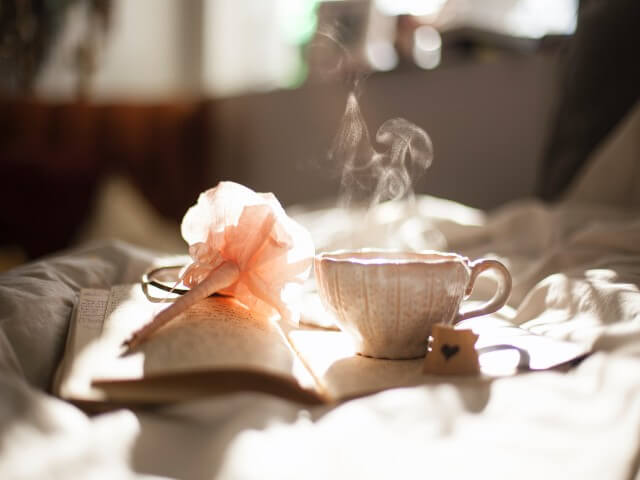All types of tea actually originate from the same plant. The botanical name for the tea plant is camellia sinensis.
This plant originated in southern China thousands of years ago, and has been cultivated and consumed for hundreds of years. Camellia sinensis has two main varieties: camellia sinensis var. sinensis, which grows primarily in China and other East Asian countries and has a milder, mellower character, and camellia sinensis var. assamica, which grows primarily in India and is generally heartier and more robust.
Black tea, green tea, white tea, oolong tea, pu-erh tea, and purple tea are all made from the camellia sinensis tea plant. Each of these teas develops their unique characteristics through different harvesting and processing methods. Some teas are steamed, some are pan-fired. Some are allowed to oxidize and some aren’t. Some tea leaves are hand-formed into tightly rolled balls, while other tea leaves are roughly chopped, or left to air-dry in their natural shape. Some teas are harvested in the first weeks of the spring season, while others are harvested in the summer and fall.
When it comes to tea, there are a few basic categories that make it easier to understand how a tea is processed and what it will taste like when brewed. Beyond these categories, however, there is a vast array of different tea varieties, growing conditions, and processing methods.
Even when using the same variety of tea and similar growing and processing conditions, teas grown in different locations will develop different characteristics thanks to the unique terroir of their environment. Ultimately, there are as many different types of tea as there are tea producers. Whether you’re just beginning to learn more about tea or are a dedicated tea drinker, there are always new and interesting single-origin teas and tea blends to choose from!
Interesting Tea Facts:
- There is controversy as to when the tea bag was first invented. Some credit American tea importer, Thomas Sullivan, who shipped tea in silk tea bags in 1908. However, in 1901, two women from Wisconsin (Roberta C. Lawson and Mary Mclaren) filed patent US723287A for their invention – the Tea Leaf Holder.
- Different types of tea require different water temperatures and steeping times.
- The most expensive tea in the world, Da-Hong Pao Tea, costs $1.2 million per kilogram($600,000 per pound).
- In 2005, to celebrate its 75th anniversary, PG Tips made a diamond studded tea bag worth $15,000. It had 280 diamonds on it!
- Darjeeling tea is known as the “Champagne of tea”. Like Champagne, Darjeeling tea must come from a particular region (a 17,500 hectare space with 78 different estates) in order to be allowed to be called Darjeeling tea.
- Putting milk in tea was originally not used for taste but as a symbol of wealth. Not all tea cups could handle hot water without it cracking the cup, so people had to pour in milk first to avoid this. Only wealthy individuals with good quality china could pour tea directly into the cup without it cracking. Therefore serving and drinking tea without milk served as a status of wealth.
- Tasseography is the term for the art of reading tea leaves.
- There’s a day dedicated to tea called National Tea Day. It falls on April 21, which is Queen Elizabeth II’s birthday!
- There are four basic types of tea derived from the Camellia Sinensis plant. Possibly five or Six actually – as it has long been open for debate, but the main varieties are Black, White, Green, and Oolong. Each variety is then broken down into hundreds of other off-shoots of the main type.
- It’s widely understood there are around 1500 known varieties of Tea. However, the exact possible number of variations is almost limitless.
- It takes about three years before a new plant is ready to harvest. It takes between four and twelve years for a tea plant to mature enough to produce seed.
We have represented all major tea categories in our extraordinary tea collection which is a delightful opportunity for you to explore these varieties of tea and diversify your tea drinking habits.All blends have been hand picked and composed of purely natural ingredients.It’s all organic and always be!
We hope you will enjoy this extraordinary tea experience the same way we do.
The Natearal Team

